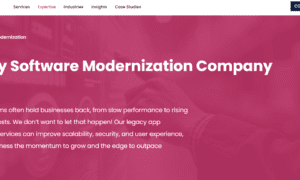Australia has emerged as one of the most dynamic markets for fintech innovation, particularly in the area of lending platforms. In recent years, the Australian fintech ecosystem has attracted global attention, not just for its creativity but for its robust regulatory environment, widespread digital adoption, and transforming consumer expectations. These factors, among others, have positioned Australia as a leading destination for fintech lending platforms.
A Tech-Savvy Population Driving Digital Transformation
One of the foremost reasons Australia stands out in the fintech lending space is its highly connected and digitally literate population. Over 90% of Australians use the internet daily, and a significant percentage conduct financial transactions online. As a result, the population has readily embraced alternative lending models, ranging from peer-to-peer (P2P) lending to Buy Now, Pay Later (BNPL) services.
Moreover, the widespread adoption of smartphones and mobile banking apps has created fertile ground for digital lenders. Consumers are increasingly looking for convenience, speed, and personalization, which traditional banks often struggle to provide. Consequently, fintech lending platforms have risen to the occasion, offering fast approvals, minimal paperwork, and customized loan options.
Regulatory Support That Encourages Innovation Without Compromise
Unlike some countries where regulations can be restrictive, Australia strikes a commendable balance between protecting consumers and fostering innovation. The Australian Securities and Investments Commission (ASIC) and the Australian Prudential Regulation Authority (APRA) have both introduced regulatory sandboxes, allowing startups to test new products and services in a controlled environment without the need for an immediate full license.
Furthermore, the Consumer Data Right (CDR) initiative enables better access to financial data, giving fintech lenders the ability to assess creditworthiness more accurately and provide more competitive offerings. This regulatory clarity has encouraged both local startups and international players to establish operations in Australia, thereby enriching the ecosystem further.
Competitive Banking Space Opening Doors for FinTech
Historically, Australia’s banking sector has been dominated by the “Big Four” banks: Commonwealth Bank, ANZ, NAB, and Westpac. While these institutions have significant market control, their rigidity and slow pace of innovation have created opportunities for nimble fintech companies to thrive.
Indeed, dissatisfaction with traditional banking services has driven many Australians to explore alternative financing solutions. Fintech lending platforms have stepped into this gap, offering everything from personal loans to small business financing, often with more favorable terms and greater transparency. Therefore, consumer trust in fintech lenders continues to rise steadily.
Investor Confidence Fueling Growth and Scalability
In addition to consumer support, the fintech lending sector in Australia has also benefited from substantial investor confidence. Venture capital firms, angel investors, and even institutional backers have shown increasing interest in funding Australian fintech startups.
For example, firms like Prospa, SocietyOne, and Wisr have raised significant capital and demonstrated the viability of alternative lending models. These success stories not only validate the market potential but also encourage further investments, enabling startups to scale faster and broaden their product offerings.
Emergence of Specialized Lending Niches
Another crucial reason Australia is a hotspot for fintech lending platforms lies in the diversification of lending niches. Many fintechs have moved beyond standard personal loans and into specialized areas such as green loans, invoice financing, student loans, and vehicle financing.
Such segmentation allows platforms to cater to highly targeted audiences, providing them with products that align with their specific needs. In turn, this strategy helps improve customer acquisition and retention. For instance, BNPL services like Afterpay and Zip have focused largely on retail shoppers, while platforms like Moula and Lumi specialize in small and medium enterprises (SMEs).
Moreover, niche-focused lending also allows for better risk management, enabling platforms to design more accurate underwriting models based on the unique attributes of each segment.
A Thriving Startup Culture Supported by Government Initiatives
Australia’s startup ecosystem is thriving, supported in large part by both federal and state-level initiatives. Government programs such as Accelerating Commercialisation, Export Market Development Grants (EMDG), and the R&D Tax Incentive have made it easier for fintech entrepreneurs to launch and grow innovative lending platforms.
Additionally, numerous incubators and accelerators, such as Stone & Chalk, Startmate, and Tank Stream Labs, provide mentorship, networking, and funding opportunities. These programs create an environment conducive to both experimentation and execution.
The government’s proactive stance not only attracts local talent but also entices international fintech firms to set up operations in Australia, further enhancing its status as a fintech hotspot.
Strong Collaboration Between Traditional Banks and Fintechs
Interestingly, rather than being solely in competition, many traditional financial institutions in Australia have begun to collaborate with fintech lending platforms. These partnerships often involve referral programs, white-label solutions, or co-branded offerings that combine the trust of established banks with the agility of fintechs.
For example, NAB has partnered with fintechs like UBank, while Westpac has invested in zipMoney and partnered with Afterpay. These alliances benefit consumers by providing more holistic financial solutions and promote an ecosystem where innovation and legacy can coexist productively.
Financial Inclusion and Democratization of Credit
Fintech lending platforms are playing a pivotal role in promoting financial inclusion in Australia. Traditionally underserved populations, such as self-employed individuals, freelancers, and immigrants, have faced difficulties in securing loans from conventional banks due to rigid eligibility criteria.
However, fintech platforms use alternative data and machine learning algorithms to assess creditworthiness, thereby opening up credit access to a much broader audience. This approach not only benefits the borrowers but also allows platforms to tap into underserved but creditworthy markets.
As a result, the democratization of credit has become a core value proposition for many Australian fintech lenders, helping to reshape the financial landscape for the better.
Adoption of Emerging Technologies Enhancing Efficiency
The use of emerging technologies is another reason fintech lending platforms in Australia are scaling rapidly. From blockchain and smart contracts to AI-driven credit scoring and real-time payment systems, technology adoption is enhancing efficiency, security, and customer experience.
Open banking APIs, in particular, have revolutionized how platforms access and analyze user data. This not only reduces the time required to approve loans but also minimizes default risks. Moreover, automation and digital identity verification tools have streamlined onboarding processes, making them faster and more secure.
In addition, the integration of chatbots and AI-powered customer service tools ensures that clients can receive assistance 24/7, enhancing user satisfaction and brand loyalty.
Global Recognition and Expansion Potential
Lastly, Australia’s reputation in the fintech sector is not limited to domestic boundaries. Australian fintech lending platforms are increasingly being recognized on the global stage, winning awards and gaining entry into international markets.
Companies like Afterpay have expanded into the U.S. and U.K., setting benchmarks for others to follow. This global recognition not only builds brand equity but also creates opportunities for cross-border partnerships, technology exchange, and strategic growth. In fact, the ability to scale internationally without compromising on compliance or customer experience is one of the strongest indicators of a mature and resilient fintech ecosystem.
Conclusion
In conclusion, Australia’s emergence as a fintech lending hotspot is no coincidence. A combination of a tech-savvy population, supportive regulations, innovative startups, investor confidence, and collaborative financial ecosystems has fueled the growth of lending platforms across the nation. Moreover, these platforms are not only meeting existing demands but also reshaping the future of finance with smarter, more inclusive, and more efficient lending solutions.































